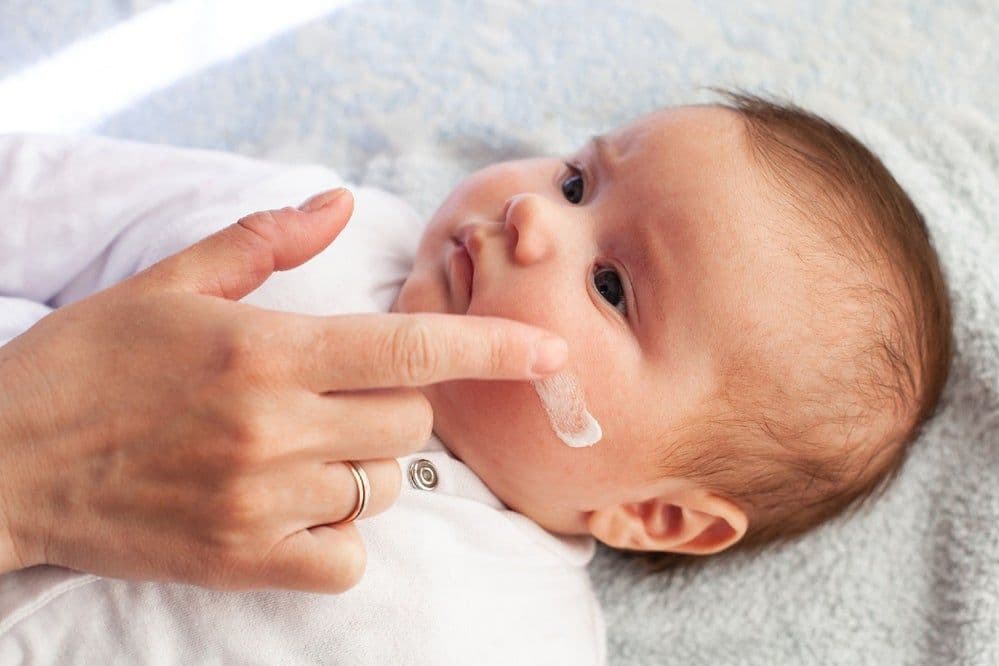BABY
Contact Dermatitis in Babies—What Parents Should Know
The sweet softness of baby also makes it extra prone to scratchy, itchy, red irritations, including contact dermatitis.

Written by
Dr. Harvey Karp

SHARE THIS ARTICLE
PARENT PICKS
Bestsellers
BABY

Written by
Dr. Harvey Karp

SHARE THIS ARTICLE
Bestsellers
Ahhh…that beautiful! plump! baby-scented! skin! It is so soft and delicious. But the softness also makes it extra prone to scratchy, itchy, red irritations, including contact dermatitis. In most cases, contact dermatitis is mild—more nuisance than nightmare—and can be managed with some simple treatments (below). But let us do a quick review and go over keeping your precious baby’s skin beautiful…step-by-step.
Contact dermatitis just means a red rash where something touched your little one’s skin. The kicker is that different children have different triggers! (More on that in a second.) The good news? Contact dermatitis is not contagious, so your kid cannot spread it to others. (Phew!)
Note: Babies with atopic dermatitis (aka eczema) are a bit more prone to contact dermatitis.
There are two kinds of contact dermatitis triggers: irritation and allergy.
This is caused when sensitive skin is touched/rubbed with a rough material or the skin stays wet (causing the loss of skin oils, drying and microscopic cracks in the skin).
Irritant contact dermatitis triggers include:
Unlike irritation, this type of dermatitis is triggered by an allergic reaction (more common in families who have lots of allergies). It usually takes one to two days after exposure for this type of reaction to kick in.
Common allergic contact dermatitis culprits include:
As mentioned above, if you were to look at your baby’s red skin with a microscope, you would see lots of teensy-tiny breaks in the skin. That is why irritated skin is easier to further inflame. It is also why it often takes a week for rashes to fully go away. In other words, when skin gets irritated, it is a good idea to be extra attentive to the rash-y area for several days after it looks better…to allow all the little, microscopic cracks to fully heal.
Here are some simple things you can do at home to help your kid’s skin bounce back:
Note: If you have a baby who is prone to irritation rashes, here are a couple of things to prevent rash before it occurs:
For persistent itchy red rashes—allergic contact dermatitis—your healthcare provider might recommend some allergy testing (this may include blood tests or skin tests where small amounts of different allergens are applied to the skin with a patch or a little pin prick) or prescribe stronger medications, such as oral corticosteroids.
You will want to call your paediatrician if:
Remember, babies get rashes all the time…it is the downside of that oh-so-touchable skin. If you spy irritation, there is no need to panic. In many cases, contact dermatitis can be easily treated with no lasting effects. Always feel free to talk with your child’s healthcare provider if you have any questions or concerns about contact dermatitis. They are there to help!
Disclaimer: The information on our site is NOT medical advice for any specific person or condition. It is only meant as general information. If you have any medical questions and concerns about your child or yourself, please contact your health provider. Breastmilk is the best source of nutrition for babies. It is important that, in preparation for and during breastfeeding, mothers eat a healthy, balanced diet. Combined breast- and bottle-feeding in the first weeks of life may reduce the supply of a mother's breastmilk and reversing the decision not to breastfeed is difficult. If you do decide to use infant formula, you should follow instructions carefully.